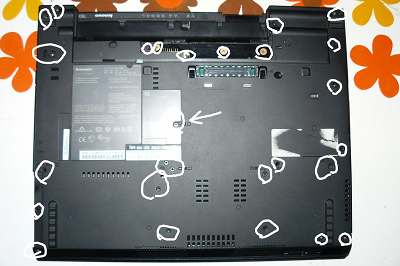
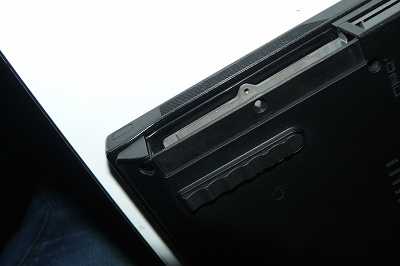
Or go back to main index
Most people think of security on the software side: the hardware is important aswell. work.
This tutorial deals with reducing the number of devices that have direct memory access that could communicate with inputs/outputs that could be used to remotely command the machine (or leak data). All of this is purely theoretical for the time being.
Remove those screws and remove the HDD:


Lift off the palm rest:
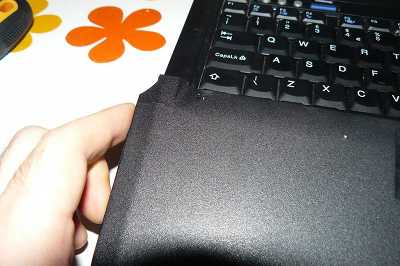
Lift up the keyboard, pull it back a bit, flip it over like that and then disconnect it from the board:
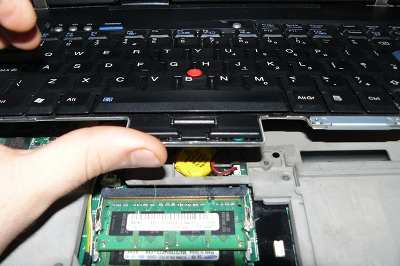
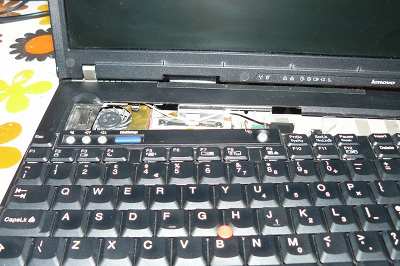
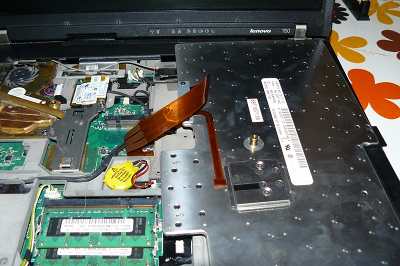
Gently wedge both sides loose:
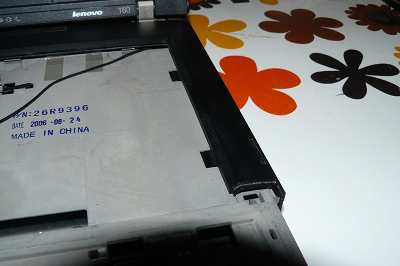
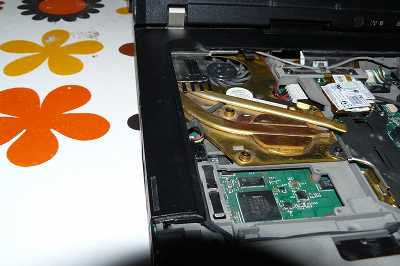
Remove that cable from the position:


Now remove that bezel. Remove wifi, nvram battery and speaker connector (also remove 56k modem, on the left of wifi):
Reason: has direct (and very fast) memory access, and could (theoretically) leak data over a side-channel.
Wifi: The ath5k/ath9k cards might not have firmware at all. They might safe but could have
access to the computer's RAM trough DMA. If people have an intel
card(most T60's come with Intel wifi by default, until you change it),then that card runs
a non-free firwamre and has access to the computer's RAM trough DMA! So
it's risk-level is very high.
Remove those screws:

Disconnect the power jack:

Remove nvram battery (we will put it back later):
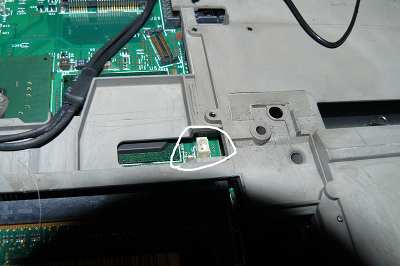
Disconnect cable (for 56k modem) and disconnect the other cable:


Disconnect speaker cable:
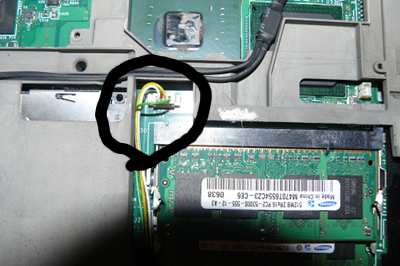
Disconnect the other end of the 56k modem cable:
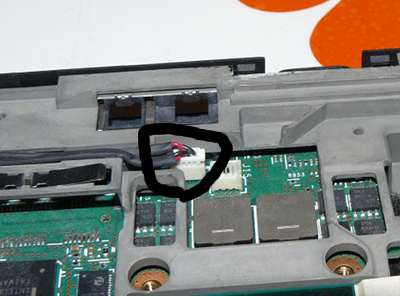
Make sure you removed it:
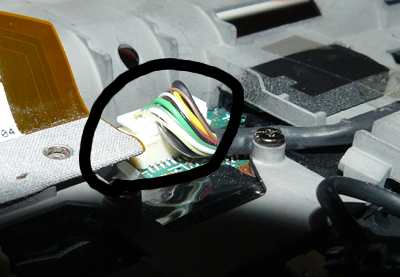
Unscrew those:

Make sure you removed those:
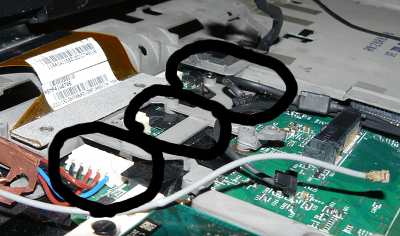
Disconnect LCD cable from board:
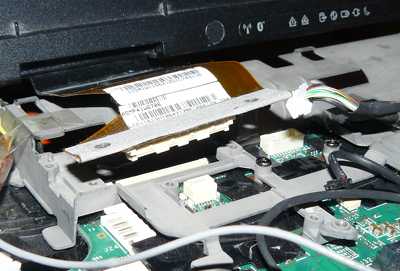
Remove those screws then remove the LCD assembly:

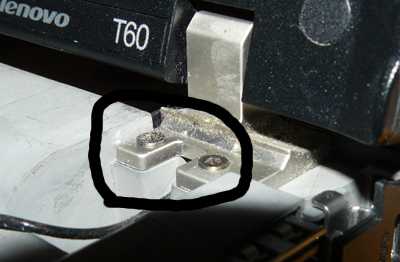

Once again, make sure you removed those:
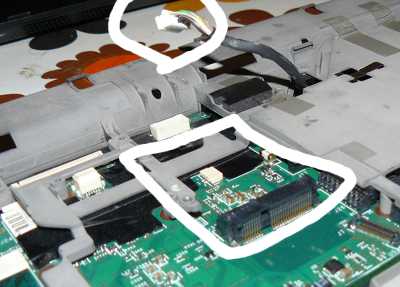
Remove the shielding containing the motherboard, then flip it over. Remove these screws, placing them on a steady
surface in the same layout as they were in before you removed them. Also, you should mark each screw hole after removing the
screw (a permanent marker pen will do), this is so that you have a point of reference when re-assembling the machine:



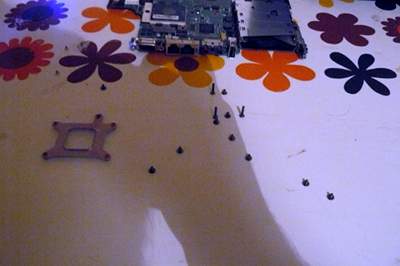


Remove microphone (soldering iron not needed. Just wedge it out gently):
Rationale:
Another reason to remove the microphone: If your computer gets[1] compromised, it can
record what you say, and use it to receive data from nearby devices if
they're compromised too. Also, we do not know what the built-in microcode (in the CPU) is doing; it could theoretically
be programmed to accept remote commands from some speaker somewhere (remote security hole). In other words,
the machine could already be compromised from the factory.
Remove infrared:
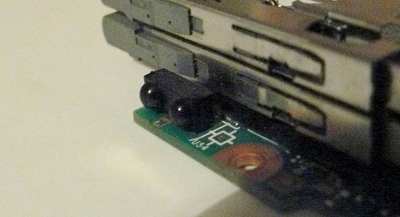

Remove cardbus (it's in a socket, no need to disable. Just remove the port itself):
Rationale:
It has direct memory access and can be used to extract sensitive details (such as LUKS keys). See
'GoodBIOS' video linked at the end (speaker is Peter Stuge, a coreboot hacker). The video covers X60
but the same topics apply to T60.
Before re-installing the upper chassis, remove the speaker:

Reason: combined with the microphone issue, this could be used to leak data.
If your computer gets[1] compromised, it can be used to
transmit data to nearby compromised devices. It's unknown if it can be
turned into a microphone[2].
Replacement: headphones/speakers (line-out) or external DAC (USB).
Remove the wwan:
Wwan (3d modem): They run proprietary software and have access to the
computer's RAM! So it's like AMT but over the GSM network which is
probably even worse.
Replacement: external USB wifi dongle. (or USB wwan/3g dongle; note, this has all the same privacy issues as mobile phones. wwan not recommended).
This is where the simcard connector is soldered. See notes above about wwan. Remove simcard by removing battery
and then it's accessible (so, remember to do this when you re-assemble. or you could do it now?)

Put those screws back:

Put it back into lower chassis:

Attach LCD and insert screws (also, attach the lcd cable to the board):

Insert those screws:

On the CPU (and there is another chip south-east to it, sorry forgot to take pic)
clean off the old thermal paste (with the alcohol) and apply new (Artic Silver 5 is good, others are good too)
you should also clean the heatsink the same way
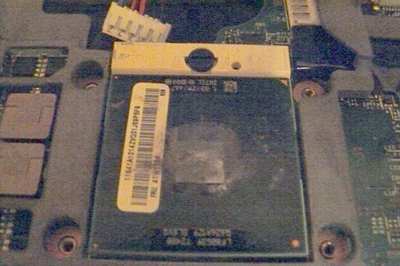
Attach the heatsink and install the screws (also, make sure to install the AC jack as highlighted):

Reinstall that upper bezel:

Do that:

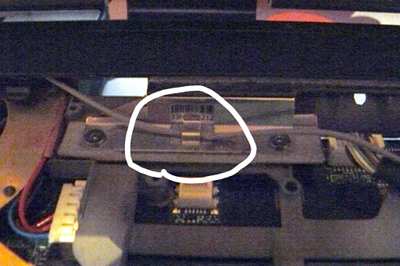
Attach keyboard and install nvram battery:

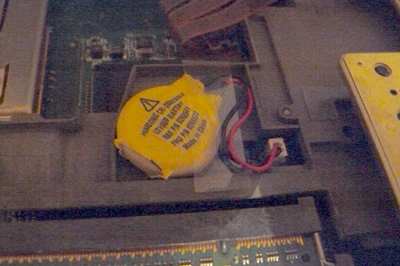
Place keyboard and (sorry, forgot to take pics) reinstall the palmrest and insert screws on the underside:

Remove those covers and unscrew:
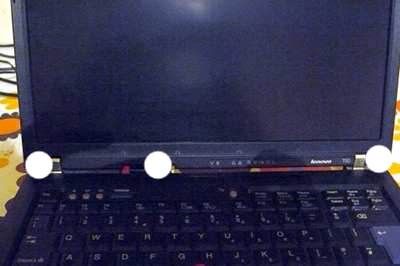
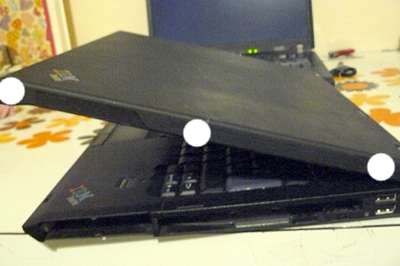
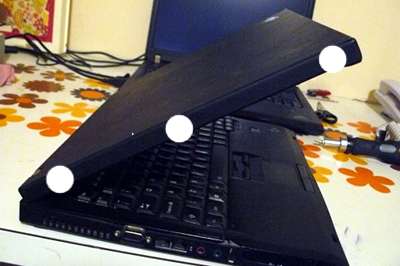
Gently pry off the front bezel (sorry, forgot to take pics).
Remove bluetooth module:

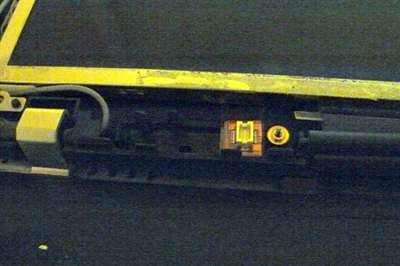
Re-attach the front bezel and re-insert the screws (sorry, forgot to take pics).
It lives!
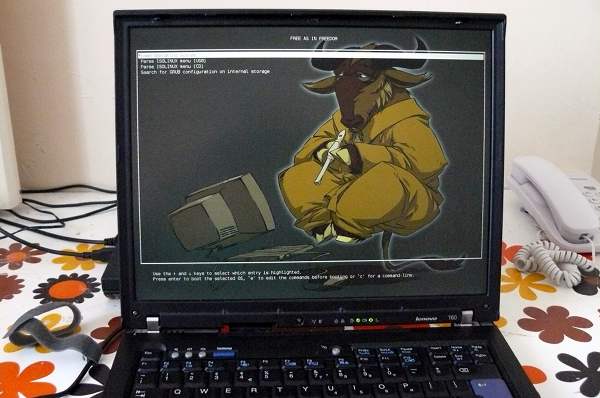

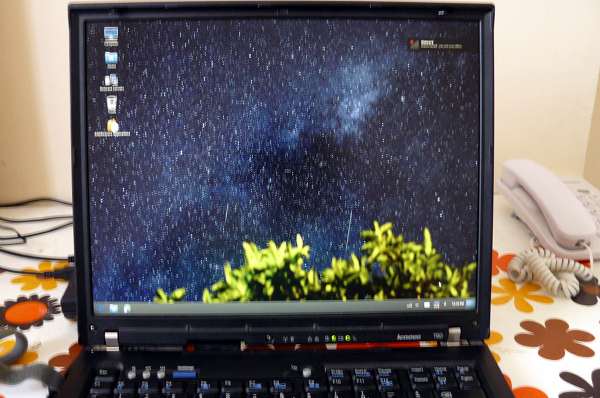
Always stress test ('stress -c 2' and xsensors. below 90C is ok) when replacing cpu paste/heatsink:

Go to http://media.ccc.de/browse/congress/2013/30C3_-_5529_-_en_-_saal_2_-_201312271830_-_hardening_hardware_and_choosing_a_goodbios_-_peter_stuge.html or directly to the video: http://mirror.netcologne.de/CCC/congress/2013/webm/30c3-5529-en-Hardening_hardware_and_choosing_a_goodBIOS_webm.webm.
A lot of this tutorial is based on that video. Look towards the second half of the video to see how to do the above.
EC: Cannot be removed but can be mitigated: it contains non-free non-loadable code, but it has no access to the computer's RAM. It has access to the on-switch of the wifi, bluetooth, modem and some other power management features. The issue is that it has access to the keyboard, however if the software security howto (not yet written) is followed correctly, it won't be able to leak data to a local attacker. It has no network access but it may still be able to leak data remotely, but that requires someone to be nearby to recover the data with the help of an SDR and some directional antennas[3].
Intel 82573 Ethernet controller on the X60 seems safe, according to Denis.
Explain that black hats, TAO, and so on might use a 0day to get in, and explain that in this case it mitigates what the attacker can do. Also the TAO do some evaluation before launching an attack: they take the probability of beeing caught into account, along with the kind of target. A 0day costs a lot of money, I heard that it was from 100000$ to 400000$, some other websites had prices 10 times lower but that but it was probably a typo. So if people increase their security it makes it more risky and more costly to attack people.
It's possible to turn headphones into a microphone, you could try yourself, however they don't record loud at all. Also intel cards have the capability to change a connector's function, for instance the microphone jack can now become a headphone plug, that's called retasking. There is some support for it in GNU/Linux but it's not very well known.
30c3-5356-en-Firmware_Fat_Camp_webm.webm from the 30th CCC. While their demo is experimental(their hardware also got damaged during the transport), the spies probably already have that since a long time. http://berlin.ftp.media.ccc.de/congress/2013/webm/30c3-5356-en-Firmware_Fat_Camp_webm.webm
Copyright © 2014 Francis Rowe <info@gluglug.org.uk>
This document is released under the Creative Commons Attribution-ShareAlike 4.0 International Public License and all future versions.
A copy of the license can be found at ../license.txt.
This document is distributed in the hope that it will be useful, but WITHOUT ANY WARRANTY; without even the implied warranty of MERCHANTABILITY or FITNESS FOR A PARTICULAR PURPOSE. See ../license.txt for more information.